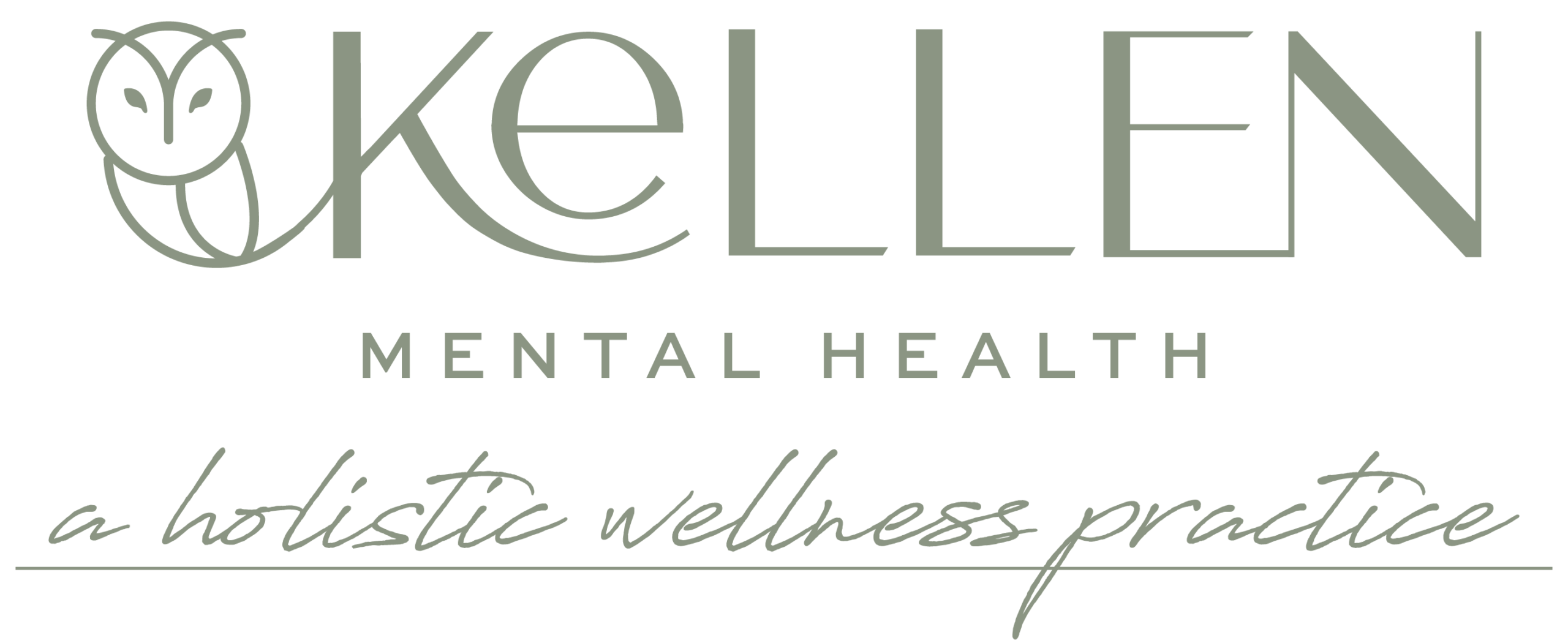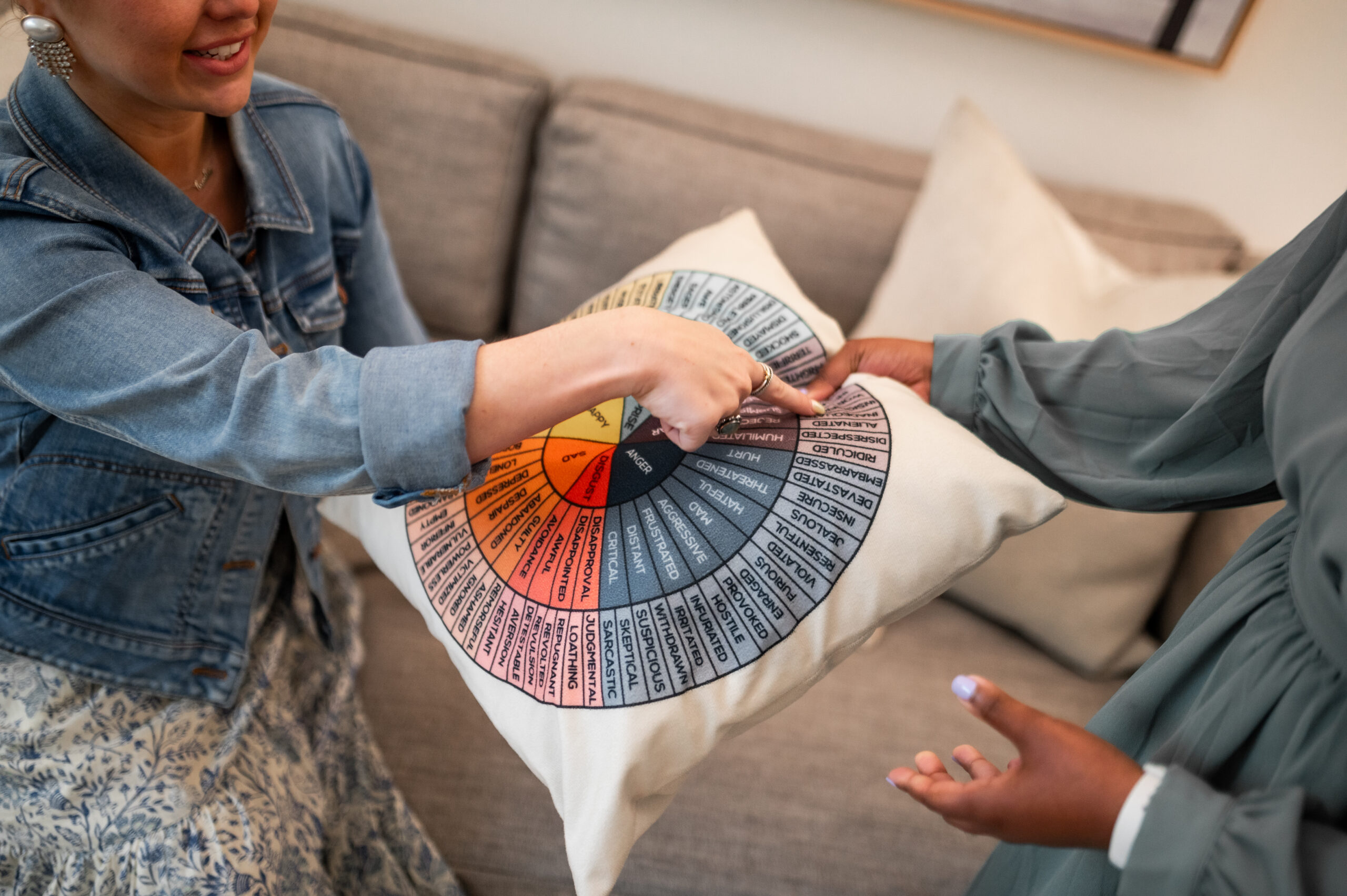In the hustle of our daily lives, we can easily find ourselves disconnected from our thoughts and feelings. We may react to situations without fully understanding how our emotions are driving our behavior. Noticing and naming our thoughts and feelings is a powerful practice that can lead to greater emotional awareness, improved mental health, and more intentional living.
The Power of Awareness
Awareness is the first step toward emotional well-being. By paying attention to our internal experiences, we can begin to better understand the relationship between our thoughts, feelings, and actions. This awareness allows us to respond to situations more thoughtfully rather than reacting impulsively.
The Practice of Noticing
Noticing involves becoming aware of our thoughts and feelings as they arise. It’s about observing without judgment. This practice can be challenging in the beginning as we learn to filter through a constant stream of thoughts and emotions. However, with practice, noticing becomes easier and more natural.
How to Practice Noticing:
- Pause and Breathe: Take a moment to pause and take a few deep breaths. This helps to calm the mind and create space for awareness.
- Observe: Pay attention to what is happening in your mind and body. Notice any thoughts, feelings, or physical sensations that arise.
- Be Present: Just try to stay in the moment with your current internal experiences, without getting caught up in them or attaching to any one in particular. If your mind starts to wander, gently bring your focus back to the present moment using your breath, or a sensation in your body, to anchor or ground yourself.
The Power of Naming
Naming involves labeling our thoughts and feelings as we notice them. This simple act of putting words to our internal experiences can have a profound effect on our emotional well-being. Naming helps to create a sense of distance between us and our emotions, allowing us to observe them more objectively.
How to Practice Naming:
- Identify the Thought or Feeling: As you notice a thought or feeling, identify it by giving it a name. For example, if you feel anxious, simply say to yourself, “This is anxiety showing up.”
- Use Simple Labels: Use simple, descriptive labels for your thoughts and feelings. Avoid overcomplicating or overanalyzing them.
- Acknowledge Without Judgment: Acknowledge your thoughts and feelings without judging them. Remember that it’s perfectly normal and ok to experience a wide range of emotions.
The Benefits of Noticing and Naming
- Emotional Regulation: Noticing and naming our thoughts and feelings can help us regulate our emotions more effectively. By creating a space between us and our emotions, we can respond to situations in a more balanced and thoughtful way.
- Reduced Stress and Anxiety: This practice can reduce stress and anxiety by preventing us from getting caught up in negative thought patterns. Naming our emotions helps to defuse their intensity (an ACT tool), making them more manageable.
- Improved Self-Awareness: Noticing and naming increases our self-awareness by helping us understand the underlying causes of our emotions; self-awareness is a key component of emotional intelligence.
- Better Connections with Others: When we are aware of our emotions, we can communicate more effectively with others, which can lead to healthier and more authentic relationships.
Putting It All Into Practice
Integrating the practice of noticing and naming into your daily routine can transform the way you think and feel so that you can show up in a manner that aligns with your values. Here are some tips to help you get started:
- Mindfulness Meditation: Practicing mindfulness meditation can help you develop the skills of noticing and naming. Set aside a few minutes each day to sit quietly and observe your thoughts and feelings – without judgment.
- Journaling: Writing down your thoughts and feelings in a journal can be a helpful way to practice naming. This practice allows you to move your thoughts from your mind to an observable format so that you can reflect more objectively on your experiences and gain deeper insights.
- Check-Ins: Throughout the day, take a few moments to check in with yourself. Notice what you are thinking and feeling and give these experiences a name.
- Seek Support: If you find it challenging to practice noticing and naming on your own, consider seeking support from a therapist or counselor. They can provide guidance and tools to help you develop these skills.
The following is a short but powerful practice for awareness, noticing, and naming…
THE RAIN+N TECHNIQUE:
MANAGING DIFFICULT THOUGHTS AND EMOTIONS
RAIN+N is a mindfulness practice in which you notice your experience, allow it to be as it is, investigate it with curiosity, and nurture it with self-compassion. RAIN was first introduced by Michele McDonald over a decade ago. It is a common practice taught by many Western mindfulness teachers including Jack Kornfield and Tara Brach (who added the additional “N”).
RAIN+N can be used with any content of mind, but is typically applied to unpleasant, uncomfortable, or upsetting internal processes. It incorporates the core teachings of mindfulness, and instructs us to Recognize, Accept, Investigate, Not-identify with difficult thoughts, feelings, desires, etc., and to Nurture ourselves.
Approaching painful thoughts and emotions in this way can transform them into more workable, revealing experiences. Practicing RAIN+N can also prevent unhelpful responses, such as rumination, emotional dysregulation, or acting out in maladaptive or harmful ways.
We can work with our difficult thoughts or emotions when they arise by practicing the five steps of RAIN+N:
R = Recognize
The first step to working with a difficult emotion is to recognize when it is present.
Recognizing involves pausing and asking yourself, “What am I experiencing right now in my body, thoughts, emotions, and situation?”
Recognizing prevents denial or avoidance because you are bringing what is un- pleasant and perhaps unwholesome into your field of awareness so that it can be seen and dealt with.
Brain imaging studies have demonstrated that recognizing and labelling emotions actually reduces activity in the emotionally reactive regions of our brain.
The most important thing is to firstly recognize when you’re triggered and/or are experiencing intrusive thoughts or undesirable emotions. The moment you’re aware of any of it, it’s your first win. Here is where things will really start to shift.
Close your eyes and observe any thoughts, sensations, emotions. Try to name whatever it is you’re feeling, e.g. “I am feeling angry”, “I am feeling anxious”, “I am feeling frustrated”, etc. Repeat it a couple of times mentally or say it out loud.
A = Accept
The “A” in RAIN+N can interchangeably stand for “accept,” “acknowledge,” and “allow.”
Acceptance in this sense means to acknowledge what is present in this moment and to allow what is already here to be here.
It is important to note that just because you accept or acknowledge something is present does not mean that you agree with or support it. You are simply acknowledging what is present right now.
It is also important to be aware of any thoughts or emotions, such as resistance or aversion, that may arise when you recognize what you are experiencing.
Notice any subtle or unconscious forms of resisting your emotions, such as trying to “accept” them so that they will go away. See if you can truly allow what is here to be here and let the emotion(s) run its course and leave naturally.
When practicing acceptance, it may be helpful to say to yourself phrases such as “Ah, this too,” or “allow,” or “let be.”
Now take your time to allow anything you’re feeling. E.g. if you’re feeling anxious, really feel all the sensations in your entire body, notice your thoughts (without getting into the stories). We often try to push negative emotions away, because we subconsciously believe that it’s too painful to deal with it, or that we need to be strong, or that is has no use to feel it if you can just push it away. That’s the worst thing you can do, and the best thing to do is to allow whatever is there. This helps to not be reactive towards “the person causing this”. Rather, breath, pause, and allow the feelings to be there. They are ok, you are ok.
I = Investigate
After working with recognizing and accepting what is present for you, begin to investigate your internal experience.
It is crucial to bring an attitude of kindness, curiosity and compassion to your investigation.
Investigate three primary facets of your internal experience:
Physical sensations
Notice what sensations are present in your body, including their textures, layers, changing nature, and anything else that occurs.
Emotions
What is the basic feeling tone of your experience (positive, negative, neutral)? What emotions are present?
There may be many different emotions present.
Ask yourself, “What does this feeling want from me right now? What is it trying to tell me?”
Thoughts
Notice what thoughts are passing through your mind. Perhaps ask yourself, “What stories am I believing right now?”
Be super curious about why you got triggered or have these thoughts and emotions. You can go back to the exact moment that caused this feeling, and ask yourself “what might be causing me to feel this way?” “What might be underneath it?” The root of cause can be very variable, from a simple thing that has happened to you before, to a real big trauma in your childhood, or to being hungry, angry, lonely or tired (the H.A.L.T. method of identifying triggers). You also may be experiencing some thought patterns that are uncomfortable but familiar. Really examine them and ask, “is this useful for me.”
Just a tip, try not to fall into your own trap of “I don’t know.” You always know! So, ask yourself, “if I thought I knew why, what would my answer be?” It’s not about the right answer; it’s about investigating and getting answers so you can create self-awareness.
Say it mentally or say it out loud for yourself, to be clear about the reason.
N = Non-Identification
Non-identification means not believing that your emotions “belong” to you or labeling them as “me” or “mine.”
It involves not taking emotions personally and understanding that “your” emotions are not really yours. The emotions you experience are also not unique to you, but instead are shared and experienced by all humans.
It can be helpful to label the emotion you are experiencing as something that is present in this moment but not enduring.
Example:
Instead of saying, “I am so angry!” or, “I am such an angry person,” you could reframe it more accurately by saying “I am noticing the presence of anger in my body right now. I sense that my neck and shoulders are tight, my head hurts, and I am clutching my fists” or “I am noticing that I am experiencing anger in my body right now.”
Don’t wrap up your identity with your thoughts and feelings, especially if they cause you to behave in a way that is not in line with your emotions or not useful in the situation. You are not your thoughts, you are not your emotions, you are not your traumas and issues from the past. These things are all in the experiences that you are working to heal, but they do not define you.
N = Nurture
Now add in the second “N” of Nurturing. Take the time you need to nurture yourself through self-care and mindfulness throughout the day, but especially when difficult thoughts and feelings arise.
+NURTURE!
Conclusion
Noticing and naming our thoughts and feelings is a simple yet powerful practice that can lead to greater emotional well-being. By becoming more aware of our internal experiences, we can respond to life’s challenges with greater clarity and intention. This practice not only benefits our mental health but also enhances our relationships and overall quality of life. Start noticing and naming today and discover the profound impact it can have on your emotional well-being.


